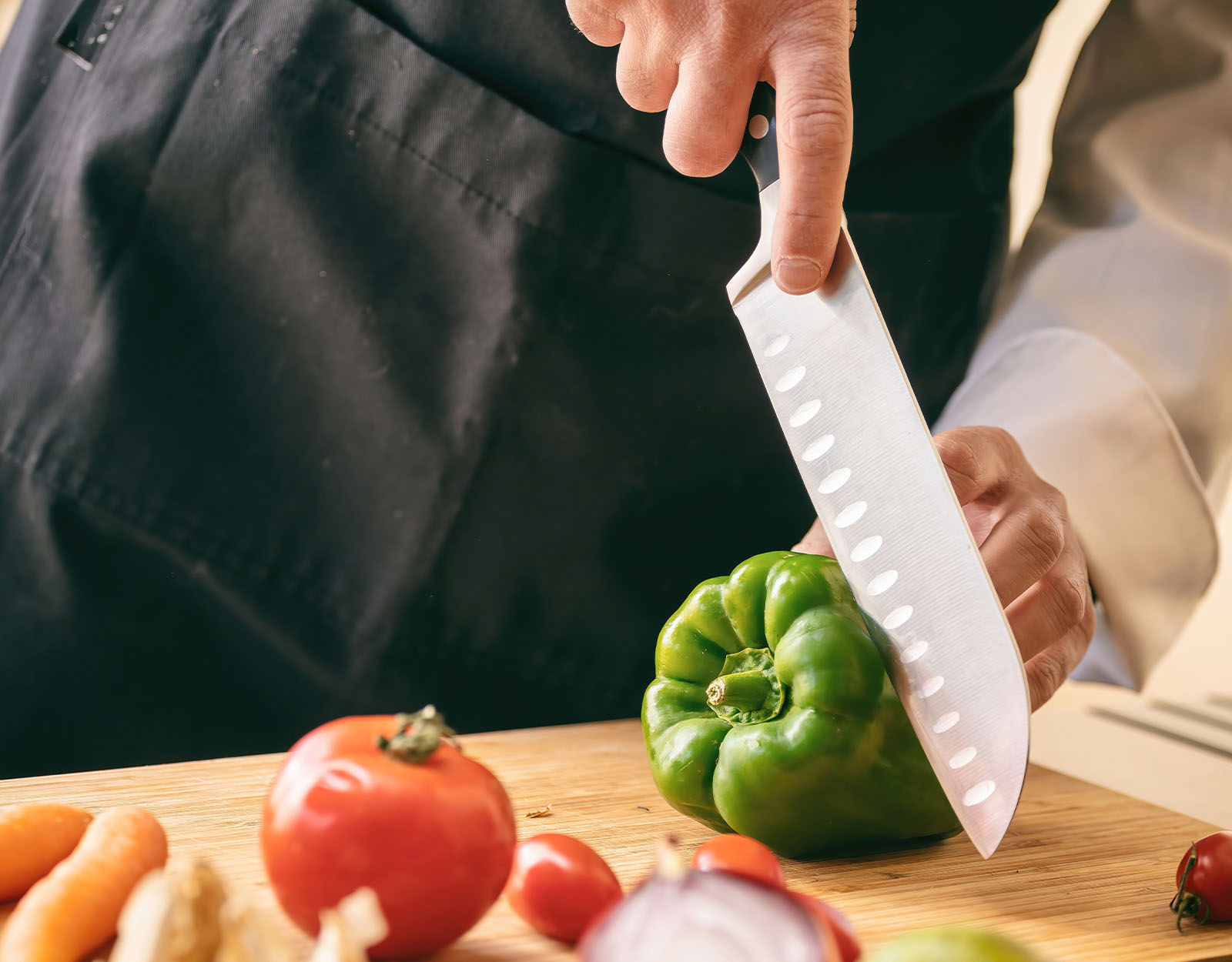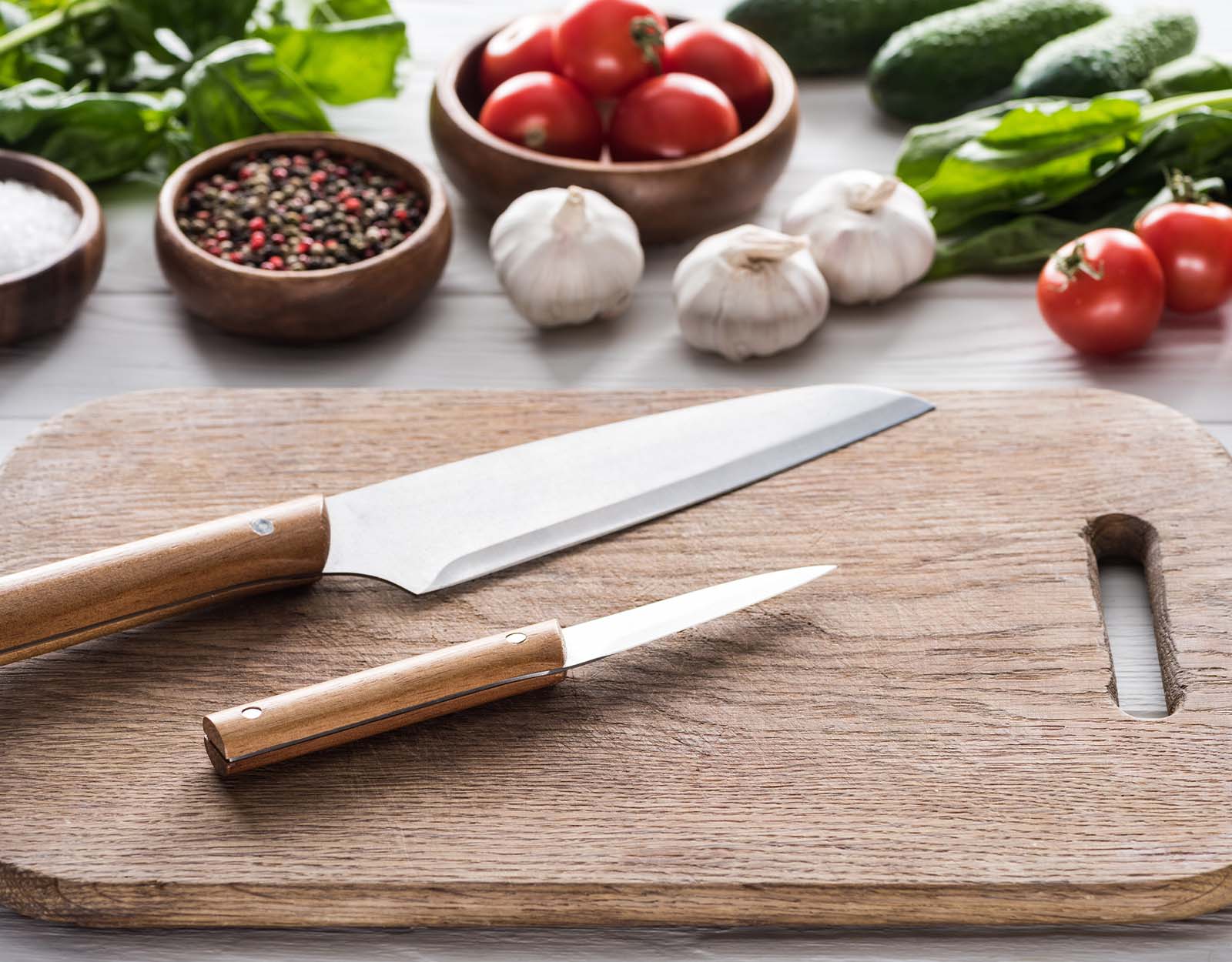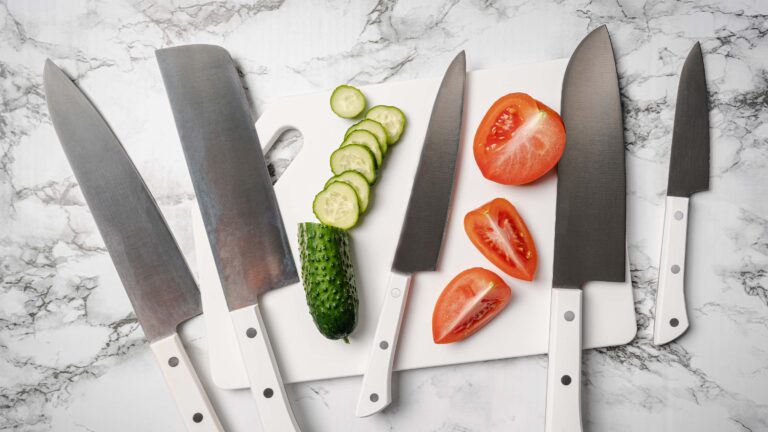Kitchen
Slice and Dice: 7 Essential Knives for All Your Cooking Needs
The right kitchen knives can elevate your culinary game, especially when it comes to cutting and slicing.
Having the right tools can make all the difference. Take knives, for example. As the unsung heroes in the kitchen, a knife is indispensable for your cooking needs. This versatile tool can do so much—from peeling fruit to slicing meat, dicing vegetables, chopping up herbs, mincing garlic, and more!
Whether you’re starting a new collection of kitchen knives or looking to upgrade or add to your current set, here are the essential knives you’ll need in your arsenal.

7 knives that every home cook needs in the kitchen
1. Chef’s knife
If you have a small kitchen or you find yourself on a budget, the chef’s knife is the first thing you need in your arsenal. As the Swiss Army knife (literally!) of the kitchen, this all-purpose blade can be used for just about anything—from chopping vegetables with precision to slicing thick, dense cuts of meat.
A chef’s knife is typically between eight and ten inches, although some knives can go for as short as six inches and as long as 14 inches. With its broad blade and sturdy spine that tapers to a sharp, pointed tip, this knife is your go-to tool for pretty much everything in the kitchen.
2. Paring knife
The paring knife is small but mighty. It’s the perfect tool for handling intricate tasks!
Think of it as a smaller chef’s knife that shines when delicate work is involved. With a blade that’s no longer than 3.5 inches, this slender knife gives you more room to maneuver, making it a must-have for peeling and deseeding fruit, deveining shrimp, or even crafting intricate garnishes.
3. Serrated bread knife
If you’re the type who enjoys having bread and pastries on a regular basis, you’ll definitely need a serrated bread knife. By its very name, this long knife has a serrated edge that looks like a saw. This allows you to cut something without applying too much pressure on it.
What’s more, its sharp teeth help grip and slice through bread and pastries without deforming or crushing it. That way, your favorite baguettes, pandesal, and croissants will keep their form!
4. Utility knife
If the chef’s knife and a paring knife were to have a baby, it would be a utility knife. Bringing together the heft of a chef’s knife and the precision of a paring knife, this multi-purpose knife can be used for slicing cheese, sectioning citruses, slicing tender pieces of meat, or even trimming vegetables.
Generally, a utility knife is six inches long. It’s longer than a paring knife and narrower than a chef’s knife. It’s a “knife of all trades” that is compact and just as versatile.
5. Carving knife
If you’re serving up a massive turkey, ham, or roast at your next family gathering, you’ll definitely need to have a carving knife. This blade is usually fifteen inches long and features an indentation that stops food from sticking to the surface. That way, you can easily adjust the thickness of your cuts, whether it means cutting ham into paper-thin slices or pork tenderloins into thick portions.
6. Kitchen shears
Although kitchen shears aren’t knives in a traditional sense, it’s just as important in your toolkit. After all, it can be used to snip herbs or trim poultry, along with cutting up parchment paper and opening up packages. Think of them as scissors, but for the kitchen—with sharp blades that allow for better maneuverability.
Tip: You can even use it to cut thin meat or kimchi in your next Korean barbecue session. It’s more efficient that way, plus, you don’t stain the chopping board. Just remember not to cross-contaminate. Never use the same kitchen shears to cut raw and cooked food unless you wash it properly.
7. Cleaver
Thick, heavy, and sharp. A cleaver is a rectangular-shaped knife with a thick spine and a large, broad blade that is often used to cut through bones. While it’s usually used by butchers and not common in home kitchens, having one gives you better control over the cuts of your meat.
In fact, you can use them to split poultry, pork, or beef bones when making soup stock, along with cutting through joints or separating ribs. The flat side of the cleaver can even be used to tenderize tough cuts of meat. Just lay the meat flat, then pound or flatten in a cross-hatch direction across all sides!

Why having the right kind of knife is important
More than aesthetics, having the right kind of knife is all about safety and efficiency. This helps prevent accidents in the kitchen and makes the cooking experience more enjoyable. That way, you can focus on creating delicious meals for the family without worrying about slip-ups and mishaps along the way!
With its precision, versatility, and reliability, a good set of knives will help you elevate your cooking game. But just as these tools serve you well, it is important for you to invest in a good set. Make sure to read up on the materials, buy from a reliable brand, and take care of them by regularly sharpening them and storing them well.
More kitchen must-haves!
Essential Kitchen Appliances For Condo Living
Tablescaping Finds: 10 Ceramic Shops You Need to Check Out
No to Krazy Kitchens: 9 Hacks to Keep Your Kitchen Clean and Clutter-free





